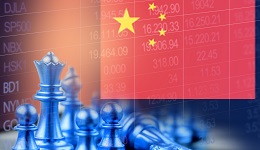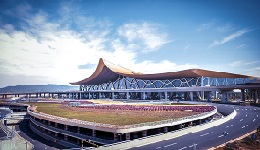
China slims negative lists and more sectors have the opportunities to investment.
On June 30, the China Development and Reform Commission and the Ministry of Commerce issued the 2019 edition of the Catalogue of Encouragement of Foreign Investment Industries. This time the list continues to relax restrictions, open areas, more industries will have the opportunity to invest in the Chinese market.The total number of entries is 1,108, of which 415 are national catalogues, an increase of 67 compared with the 2017 edition; and 693 in the central and western catalogues, an increase of 54 compared with the 2017 edition. Overseas companies can enjoy preferential policies in accordance with the law in more industry sectors. This list mainly involved the fields of transportation, culture, value-added telecommunications, agriculture, mining and manufacturing. Special attention is that ,with the advancement of industrial upgrading, you can find new opportunities in the fields of traditional industry transformation, high-end manufacturing, intelligent manufacturing, and green fields. This time China will also attract more technical levels. Not only that, but while canceling the restrictions ,various local provinces and cities will also introduce relevant preferential policies to attract enterprises. For example, from now on, foreign companies will be exempted from importing their own equipment tariffs and withholding income tax. They can also enjoy local land concessions and financial support. In addition, which choose to invest in the Midwest areas can also enjoy some policies in the central and western regions of China. For you, this is an excellent opportunity to invest in the Chinese market. China's vast market, low investment costs, and preferential policy measures are powerful attractions for com panies to enter their market. In particular, broad and promising market background has always been the primary consideration.Otherwise,in the face of diversified industrial layout and complex market environment, it is a big problem for overseas companies to find their own positioning and better invest in China.About this problem, Tanikawa can provide excellent solutions. As a localized company, we has deep cooperation with nearly 100 governments and parks , whats more ,we have an in-depth understanding of local government and park information. Understanding the specific situation of the industrial distribution of various areas across the country, and can help you to quickly connect and accurately match. In the process of selecting sites, we can conduct regional screening and field visits according to the specific positioning of foreign industries. And about docking negotiations with the government, can implement relevant procedures and implement a series of site selection links such as final settlement and follow-up services. Recently, we have helped the Dutch Royal Enterprise DSM Group, Finland Kemppi OY, the United States Sealy silk and other companies successfully selected in China. If you have the intention to come to China, please contact us, and we will provide you with the specific information before investing.
China and Southeast Asia have close economic ties
According to relevant reports released by the Foreign Economic and Policy Research Institute, the economic ties between China and Southeast Asia are very close, which are reflected in the following two aspects:China's direct investment in Southeast AsiaAfter the global financial crisis, China's direct investment in the region has grown substantially. Since 2013, China's investment in Vietnam has been increasing year by year; Singapore is China's preferred country for direct investment in the region. Although China is not a major investor in the richer countries of the region, for countries like Vietnam, Cambodia, Malaysia, etc., Chinese investment is of great significance.China's investment in Southeast Asia is mainly distributed in manufacturing, retail and finance. Compared with other major investors, China's investment in Southeast Asian manufacturing is not much, but China's investment in manufacturing in the region is still much higher than investment in Africa and Latin America. As labor costs rise and competition in the domestic market becomes increasingly fierce, Chinese manufacturing companies are moving or expanding to Southeast Asia. China's mergers and acquisitions in Southeast Asia are concentrated in three countries: Singapore, Malaysia and Indonesia, with most M&A transactions occurring in the power sector (35%), followed by manufacturing (16%) and real estate (13%).China's infrastructure construction in Southeast AsiaInfrastructure construction is the best indicator of China's increased economic impact on Southeast Asia. The lack of infrastructure is a major obstacle to the sustainable growth of the region's economy, and China's infrastructure has provided an unprecedented new impetus to meet this challenge. China is implementing large-scale infrastructure projects under the “Belt and Road Initiative” initiative, including transportation, energy infrastructure construction and the development of regional special economic zones.The prospects for China-Southeast Asia relations will depend on its investment in manufacturing. China's private sector investment in manufacturing in the region will have a major impact on the development of Southeast Asia. At the same time, China's state-owned enterprises are attracting global attention through huge infrastructure projects. China used to be a processing center in the global value chain, and has gradually transformed into an intermediate supplier and is building a domestic production chain dominated by large companies.In recent years, the all-round exchanges and cooperation between China and South Asia and Southeast Asia have been continuously enriched and expanded. In particular, the “One Belt, One Road” initiative has received positive response and support, and has achieved in terms of policy communication, facility connectivity, trade smoothness, capital finance, and people's hearts. Phased results. The deepening exchanges and cooperation also bring more economic opportunities to China and Southeast Asian countries in South Asia, and it is expected to maintain rapid economic development in the region through further opening up and cooperation.
China's foreign investment environment is more fresh
“The investment environment is like the air, and the air is fresh enough to attract more foreign investment. In the past, China’s attracting foreign investment mainly relied on preferential policies. Now it is more important to improve the investment environment.” This is the opening of President Xi Jinping’s opening ceremony at the Boao Forum for Asia last year. The keynote speech proposes to create a more attractive investment environment.What is “one-in-one”?In 2018, under the background of the slow recovery of cross-border investment in the world and the complex and ever-changing international trade relations, China’s use of foreign capital has reached a record high. The actual use of foreign direct investment in the whole year reached US$135 billion (excluding banking, securities and insurance). , an increase of 3%. At the same time, the newly established foreign-invested enterprises have grown by nearly 70%, and China continues to be a hot spot for cross-border investment.Wang Fuwen, deputy minister of the Ministry of Commerce, pointed out that in order to change the high-quality development of China's economy, we must pay more attention to the market environment of fair competition and pay more attention to the optimization of the investment environment.In his view, the implementation of the business filing and industrial and commercial registration of foreign-funded enterprises in the country "a set of forms, one-time handling" to simplify the establishment of foreign-funded enterprises is a key link in the introduction of foreign investment."One-time handling" can be summarized as "one open, two single". The so-called "one get through" is to "open up" the information system of the local business department, industry and commerce and market supervision departments, and realize data sharing between the two departments; "two singles" It means that a foreign-funded enterprise or a foreign investor fills in a “single form” online by logging in to the “single window” of the websites of the local industrial and commercial and market supervision departments, thereby realizing the simultaneous filing of business records and industrial and commercial registration procedures.Through the implementation of “one-time handling”, foreign-funded enterprises can realize “no paper”, “zero-face” and “zero-charge” in the whole process. There is no need to run two departments, and there is no need to repeat the information, which greatly saves foreign investment. Time and labor costs for the business.What is the effectiveness of the foreign investment environment improvement?Relevant data shows that the optimization of my foreign investment environment has achieved good results. According to the data of the Ministry of Commerce, from January to April this year, 13,039 foreign-invested enterprises were newly established nationwide; the actual use of foreign capital was 30.52 billion yuan, a year-on-year increase of 6.4%. Among them, the actual use of foreign capital in April was 62.95 billion yuan, a year-on-year increase of 6.3%.Among them, the actual use of foreign capital in electronics and communication equipment manufacturing, computer and office equipment manufacturing increased by 38.7% and 45.8%. The actual use of foreign capital in the high-tech service industry was 52.48 billion yuan, a year-on-year increase of 73.4%. Among them, information services, research and development and design services, and scientific and technological achievements transformation services increased by 57.4%, 49.1% and 96.3% respectively.In addition, the absorption of foreign capital in the central and western regions and the Pilot Free Trade Zone has steadily increased. According to reports, the actual use of foreign capital in the central and western regions in the first four months was 22.07 billion yuan and 21.16 billion yuan respectively, a year-on-year increase of 4.5% and 9.6% respectively. The actual use of foreign investment in the Pilot Free Trade Zone increased by 11.8% year-on-year.
Southeast Asia's economic growth is expected to be stable, and the overseas investment environment is excellent.
A number of agencies recently released reports that despite the global economic downturn and trade tensions, strong domestic demand and good development momentum in Southeast Asia have resisted external risks to a certain extent. It is expected that the region's economy will remain in 2019. Stable growth also creates a good environment for foreign investment.Strong domestic demand and stable economic growthAccording to statistics, the booming urbanization of Southeast Asia has made a major contribution to the region's gross domestic product (GDP), which has strongly supported the continued growth of the local consumer class, has huge market potential, and provides sufficient labor for industrial development.Strong infrastructure spending in the ASEAN region will continue to promote economic growth, especially in Brunei, Indonesia and Thailand. According to a research report from ADB, between 2016 and 2030, Southeast Asia needs to invest about US$210 billion annually in infrastructure construction, equivalent to 5.7% of GDP. Currently, the relevant investment in the region is far below this demand.Promote reform and diversificationTo counter external risks, governments have adopted a series of initiatives to attract foreign investment and market diversification. For example, Vietnam and Malaysia actively participate in international multilateral organizations' consultations to improve regulations on intellectual property rights, labor protection and environmental protection; Myanmar has begun to promote foreign investment in the retail industry to obtain an “open dividend”; the Philippine government is committed to eliminating infrastructure. The bottleneck; the Brunei government is advancing the economic diversification strategy to get rid of the dilemma of over-reliance on oil and gas resources exports; Malaysia, Vietnam and Thailand are actively exploring the Chinese market.Strengthen regional cooperationThe cooperation of all countries is a good way to maintain economic development in Southeast Asia. ASEAN countries are committed to internal cooperation and external linkage. For example, ASEAN has strengthened regional cooperation with countries such as China, Japan, and South Korea. Moreover, countries have transferred industries to each other in accordance with the characteristics of their own development. For example, economies with lower levels of development should strengthen industrial transfer and promote a virtuous circle of regional economic development.In terms of China, ASEAN countries have combined their actual economic conditions to link their economic development strategies with China's “One Belt, One Road” initiative, especially in the areas of infrastructure construction, new technology, and e-commerce. With the advancement of the “Belt and Road” construction, the cooperation space between the two sides will be further expanded.According to the 2019 Asian Development Outlook Report, the economic growth rate of the ASEAN countries this year is expected to be 4.9%, a slight decrease from last year's 5.1%. Despite this, the World Bank’s previous Global Economic Outlook report states that East Asia and the Pacific remains one of the fastest growing regions in the world.Source:People's daily
Kunming, Yunnan, will accelerate the construction of a regional international center city
Kunming has gradually formed the “three brands” represented by “China's Healthy City”, “World Spring City Flower Capital” and “Historical and Cultural City”. At the same time, Kunming will accelerate the construction of its economic and trade center, continuously develop local characteristic industries, advantageous industries and strategic emerging industries, and lay a solid foundation for the construction of regional international central cities.Increase the intensity of industrial constructionKunming has successfully approved the cross-border e-commerce comprehensive test zone and the national foreign trade transformation and upgrading base. In 2018, the import and export volume reached US$ 13.12 billion, an increase of 67.6%. In the future, Kunming will continue to intensify its construction efforts, especially through the industrial construction to speed up the construction of the economic and trade center. Kunming will focus on making a large economic aggregate through relevant measures. Among them, we will focus on building three new energy vehicles and supporting, information and intelligent manufacturing, and chemical industry.Cheng Lianyuan, member of the Standing Committee of the Provincial Party Committee and secretary of the Kunming Municipal Party Committee, said that Kunming will accelerate the development of big data, vigorously implement the “Cloud on the Cloud” action plan, and pay close attention to major projects such as Chenggong Information Industry Park, in terms of increasing industrial construction and accelerating industrial transformation and upgrading. Construction, efforts to create a radiation center for information industry in Southeast Asia and Southeast Asia. At the same time, it will also cultivate advanced equipment manufacturing industries such as high-end equipment, mechanical and electrical products, energy-saving and environmental protection equipment, and new energy vehicle manufacturing, and strive to build Kunming into an important advanced equipment manufacturing base for Southeast Asia and Southeast Asia.Building an international trade platformKunming will also build an international trading platform for South Asia and Southeast Asia. We will continue to promote the industrial trading system with industry as the support and various trading platforms as the link.Kunming is cooperating with the completion of the “single window” of China (Yunnan) international trade and the construction of a cross-border e-commerce public service platform in Yunnan Province. At the same time, build a cross-border e-commerce offline industrial park platform, and plan and build a cross-border e-commerce industry cluster. Construct a cross-border e-commerce financial service platform, build a cross-border e-commerce cooperation platform for Kunming-South Asia and Southeast Asia, participate in the construction of “GMS cross-border e-commerce cooperation platform”, and strengthen cross-border e-commerce customs clearance cooperation with South Asia and Southeast Asia.Increase investment attractionKunming will continue to carry out "big investment, recruiting big business", vigorously promote the "top-notch" investment, and improve the accuracy and effectiveness of investment attraction.Industrial investment has a prominent position in attracting investment in Kunming. This year, Kunming implemented the industrial chain investment project to ensure that the investment in industrial projects accounted for no less than 30%. Continue to implement the project to promote leadership "management responsibility system", improve the rate of contracting projects, the rate of operation. Ensuring the introduction of domestic capital of 120 billion yuan, the actual use of foreign capital of 930 million US dollars.In the 2019 annual action plan promulgated by the Kunming Municipal Government, Kunming will intensify its construction in the areas of transportation, energy, logistics, communication, and technological innovation in the future, strengthen contact and cooperation with Southeast Asia from all dimensions, and build a connection with the mainland. An important hub for South Asia and Southeast Asia to accelerate the process of building into a regional international central city.
Three major paths for domestic enterprises to successfully "go global"
With the implementation of the “going out” strategy, more and more Chinese companies are operating globally and opening up international maps in various ways.If you want to go out better, companies should understand why they go out and how to go out?Based on the relevant experience of overseas expansion of domestic private enterprises, Gu Chuan summed up the three successful paradigms of private enterprises going global.First, rural encirclementTake the lead in countries and regions with less difficulty. After the conditions are ripe and ready, they will gradually enter the developed countries and regions, and finally realize the occupation of the global market.Typical, such as Huawei, decided to go out, Huawei talents found, looking at it, the fertile soil that can be seen, has long been left. In the end, only those areas with remote turmoil and poor natural environment gave Huawei a glimmer of life. Eventually they decided to establish a rural revolutionary base and encircle the city in rural areas. Deng Tao, who was responsible for opening up overseas markets, said, "In the first time in Africa, almost no one knows Huawei, and even does not know China. Everything starts from scratch." In the face of all doubts, Huawei has gradually grasped the key breakthroughs in key markets. From the point of line to the line, slowly develop its own market, find revolutionary base areas in the countryside, and rely on it to develop The national market is surrounded by layers to prepare for the final entry into the high-end market. The remaining fruits of "Asia, Africa and Latin America" eventually bloomed with gorgeous flowers.Second, capacity resource layoutConsidering the company's key production resources, technology research and development resources, and customer resources, the global R&D layout, production base layout, and marketing network layout will be used to achieve the highest comprehensive operational efficiency, optimal production capacity, lowest cost, and shortest lead time.For example, Hailiang Group, according to the global copper product market demand, through the acquisition, mergers and acquisitions to form a global production and processing base. Hailiang Copper Processing Industry is committed to the R&D, production, sales and service of high-grade copper and copper products. It was listed on the Shenzhen Stock Exchange in 2008. Hailiang Copper Processing has become one of the largest R&D and production companies of copper tubes and copper rods in China. It is the largest copper tube export enterprise in China, the world's largest alloy copper tube manufacturer and an internationally renowned copper processing enterprise, with 188 countries around the world. Established long-term business relationships with more than 800 customers in the region.Third, the thief first smashed the kingWhen it is about to enter a new field, it will directly gain industry leading position and high development quality by acquiring and controlling one of the two leading companies in the industry.The acquisition of KUKA like Midea and the subsequent business integration are good examples. Midea's acquisition of KUKA is one of the most classic multinational acquisitions in a decade. KUKA has been the world's leading supplier of robotics and automated production equipment and solutions, and is one of the world's four largest robotics giants. On August 4, 2018, Midea purchased 81.04% of the shares of KUKA, and with the shares already held, it will eventually hold 94.55% of the shares already issued by KUKA, and it has absolute control. Midea emphasizes that the purpose of M&A is not to ultimately hold KUKA, but to develop a strategic partnership between the two parties, to jointly develop a huge robot market in China and Asia, and to maintain the independence of KUKA. Obviously, the acquisition of KUKA is more in the enterprise transformation consideration, the United States is not satisfied with the identity of a home appliance giant, intelligent manufacturing, industrial Internet of things is its future direction, such as the recent introduction to intelligent rice cooking robots, smart refrigerators, Intelligent medical rehabilitation robots, etc."Globalization expansion is a business that requires strategic vision, strategic patience, and strategic determination." Duan Lei, founder and CEO of Hanzhe Consulting Group, believes that considering the globalization of the company's own medium and long-term planning, it will get twice the result with half the effort. . First, the rural after the city, the first small and the big, the first business after the industry, should be a relatively stable strategic line in the expansion of globalization.

Please leave us a message and we will get back to you shortly.

If you want to learn more information about investing in China, please leave your email address, we will send you the relevant information and article every month.
 0086-10-53270173
0086-10-53270173 china@tanikawa.com
china@tanikawa.com











